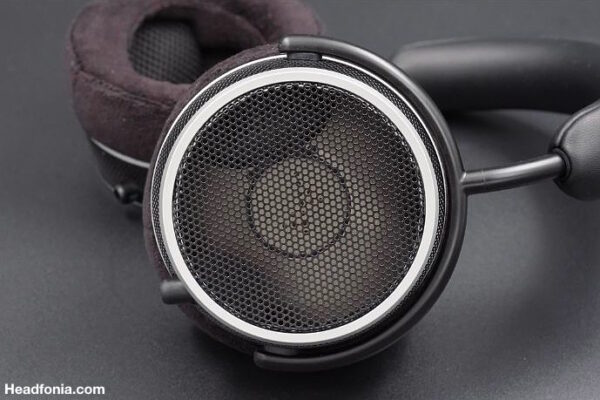If Google is showing you this page directly, click here to go to the start of the article.
Technical Performance

The Sivga Anser presents a mixed bag in terms of performance. While it excels in midrange focus and delivers remarkably high resolution for its price, it is held back by its constrained soundstage, which creates a small and boxy listening environment. This limitation impacts its sense of space and immersion, leaving the presentation feeling confined.
Tonal balance is another area where the Anser falls short for reference listeners and audiophiles. Its tuning leans toward excitement and fun, with forward mids that can lack realism. Coherency is not its strong suit, particularly in the transition from bass to mids, where the mid-bass emphasis is subdued. However, the transition from the midrange to the treble is more seamless.
The mids stand out, offering excellent transparency and clarity, while the treble is crisp and splashy. This combination results in a clear and open sound in these regions. Detail retrieval is another vital aspect, with even subtle nuances easily discernible when paired with a quality source. Despite its flaws, the Anser’s resolution and detail make it a satisfying performer, particularly for those who prioritize clarity and excitement over spaciousness and tonal accuracy.
Comparisons
Supposedly the closed-back version of the Anser, the Oriole has an identical design and the same materials. The only difference is the Sivga proprietary 2.5mm cable connectors on the headphones.
Sound-wise they’re also similar, with a fun and engaging sound. The open back Anser has slight advantages, such as sound-stage, which is still limited but nevertheless better than the Oriole. It also has a more spacious bass and a bit more airy treble. So if you’re looking at these two options at the same price (199$), it comes down to the isolation factor. If you don’t need isolation, the Anser sounds slightly better for the same money.

The HD560 S has a lean and neutral bass, offering even less quantity than the P2 Pro. The 560 S is an analytical headphone with a flatter and drier sound signature. In contrast, the P2 Pro delivers more kick, pace, and decay in its bass. However, in the mid-range, the Sennheiser excels with its cleanliness and transparency, though the P2 Pro adds a slight musical touch that can make it more satisfying in this area. Regarding treble, the HD560 S feels airier and more spacious. If you can overlook the 100% plastic build of the Sennheiser, it offers a lot of value at a lower cost.
If you prioritize sound quality over style and portability, the Sennheiser HD 560 S is one of the best budget headphones available. In terms of design, the Sivga Anser shines with its premium materials and aesthetics, while the HD 560 S features a more practical build dominated by plastic, except for the grill. Despite this, both headphones offer comfort and practical cables at competitive prices.
Sound-wise, the two models cater to entirely different audiences. The HD 560 S leans towards an analytical and balanced tuning, which some might find borderline boring. However, its focus on realism, honesty, and tonal balance makes it an excellent choice for Classical, Jazz, Classic Rock, Blues, and Soul. On the other hand, the Anser’s fun and dynamic signature is perfect for modern genres like EDM, Pop, RnB, and Vocal Pop, emphasizing excitement and energy.
For those seeking headroom, balance, and an audiophile-oriented sound, the HD 560 S is a better fit. But the Anser takes the lead if you prefer a lively, engaging sound tailored for popular music. These two headphones are distinct in purpose and tuning, making them complementary options depending on your listening preferences.

Conclusion
The Sivga Anser offers an exciting and engaging sound signature, with rumbling sub-bass, forward mids, and crisp treble. Beyond its sound, the Anser shines with a beautifully crafted design featuring premium materials rarely seen at this price point.
This headphone is tailored for fans of popular music who prioritize convenience. It pairs effortlessly with smartphones or wireless sources. While its technical performance is impressive, particularly in resolution and transparency, the tuning is designed more for fun and excitement than pure audiophile precision.
For those seeking an audiophile-grade option, the Sivga SV023 is a strong contender with excellent performance at a competitive price. But if your preference leans toward lively tunes, portability, and affordability, the Sivga Anser might be a good choice.

Summary
Pros
Excellent build quality and premium materials
Good comfort
Vivid and fun sound
Good resolution
Cons
The sound-stage and spaciousness can be improved
Mid-range lacks some transparency
The treble needs more extension and nuance
”Audiophile” sound lovers might not be satisfied
Complex recordings proved to be difficult










Tibor
Hii. Correct your first sentence pls, I got confused right at the start LOL
Tibor
Hii. On page 2 you have another mistake, when talking about treble, you mention this is a closed back.
Can’t be bother to read page 3,because can’t even get there. It opens P2 Pro review, along when I click on page 1….
Bye
Lieven
Thx for pointing that out, it was fixed hours ago though. Can you clear your cache?